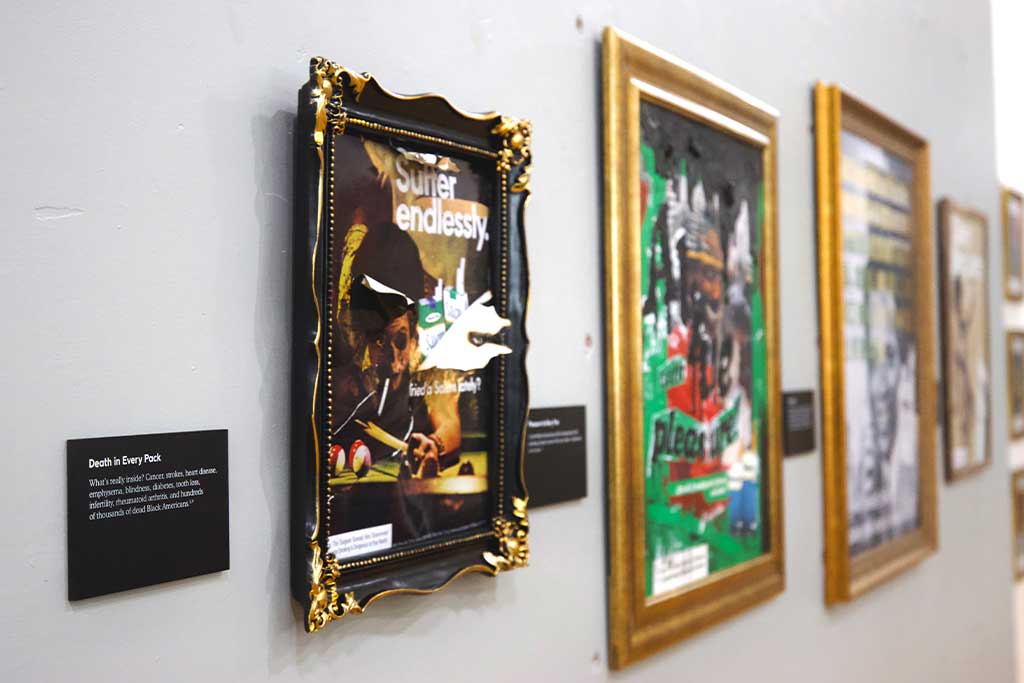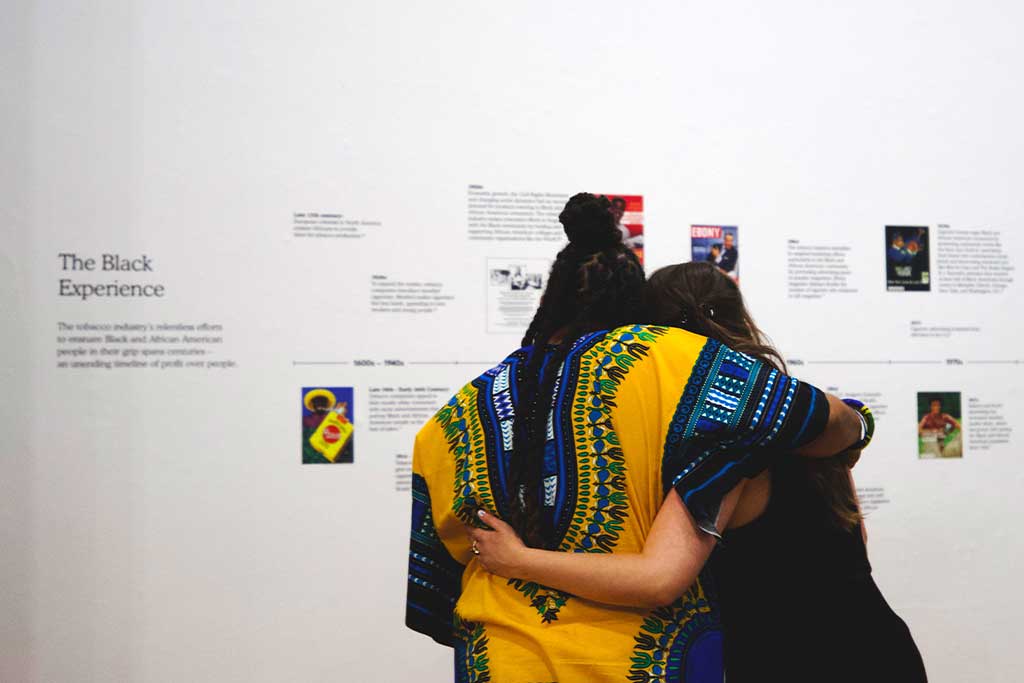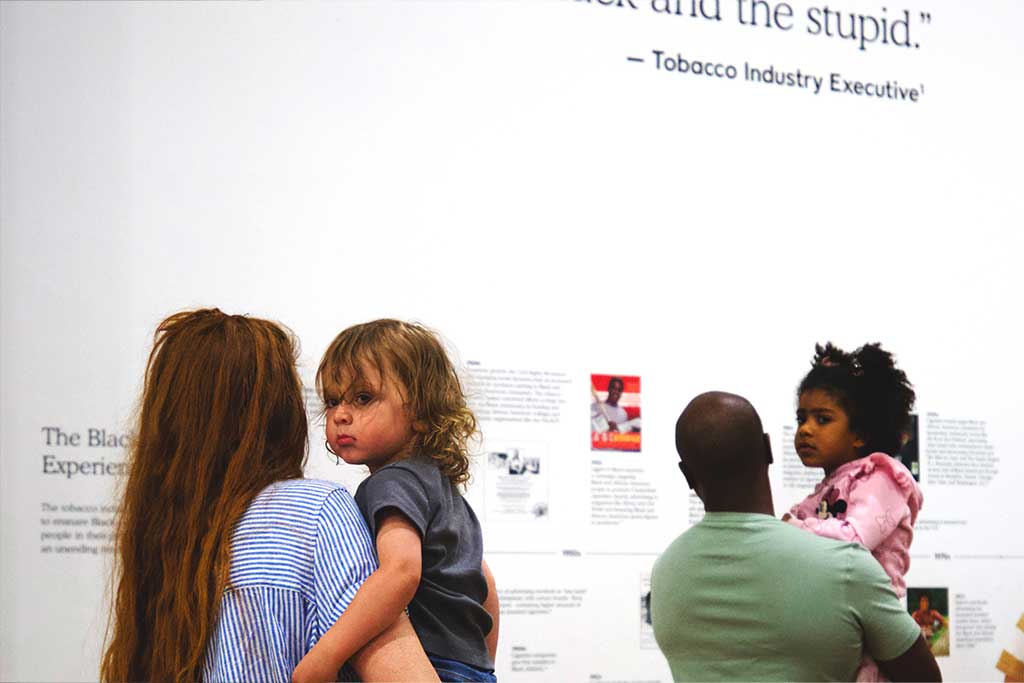Project Success and Way to Quit Launch Salt Lake City Exhibit Unfiltered
Big Tobacco’s Exploitation of Black America
The June 1, 2024, opening of Unfiltered: Big Tobacco’s Exploitation of Black America at the Urban Arts Gallery provided a compelling platform to confront the tobacco industry’s targeted marketing tactics against Black communities. This exhibit, a collaborative effort by Way to Quit and Project Success Coalition, utilized immersive art to expose the deep-seated injustices that have disproportionately impacted Black Americans. By intertwining art with advocacy, Unfiltered aimed to spark critical conversations and inspire actionable change in the fight against tobacco exploitation.
Through a series of powerful and evocative installations, the exhibit challenged viewers to reflect on the systemic practices that have perpetuated health disparities in Black communities. As attendees engaged with the art, the underlying message was clear: Accountability is essential, and the time to demand a healthier future is now.

Terrance Bynum, a social strategist with R&R Partners and a member of the employee resource group ouRRvoice, shared that the inspiration for the Unfiltered exhibit stemmed from a deep commitment to both community activism and professional growth. Bynum noted that ouRRvoice, which supports Black employees, played a crucial role in driving the project forward. “The special opportunity to work with our client, Way to Quit, who’s partnering with Project Success and working toward informing this local community about the harmful causes of tobacco,” was a key motivator behind the exhibit, according to Bynum.
The exhibit took visitors on a powerful journey, displaying how the tobacco industry has strategically targeted Black communities. Bynum emphasized the long-lasting impact the exhibit aimed to have, stating, “The way that we’re taking people through this journey of showing them how this was done is going to really leave a lasting effect for people to want to take action. Whether it be political, quitting themselves or influencing a family member to quit cigarettes, I think this is going to be a learning experience for everyone involved.”

Calvin Crawford, another member of ouRRvoice with R&R Partners, reflected on the deep-rooted influence of tobacco advertising within Black culture. He recalled how tobacco ads were often paired with stories of Black excellence, making the harmful messaging feel ingrained in everyday life. “While I’m seeing stories about some of the biggest Black icons and politicians and entertainment-focused people, I’m seeing all of these ads along the way from Newport and Camel and Kool, and they are juxtaposed with these excellent Black stories. You just receive them passively and think that that’s just part of our culture,” Crawford shared.
This juxtaposition of positive Black achievements with harmful tobacco marketing underscored the insidious nature of the tobacco industry’s tactics. “Being part of this and learning a lot more about how advertisers targeted the Black community, helped to make sense and cement the reality that this was almost a military-style tactic of advertising,” Crawford added.

Betty Sawyer, the executive director of the Project Success Coalition and president of a local NAACP branch, highlighted the ongoing struggle against tobacco-related illnesses in Black communities. “Smoking-related illnesses are the No. 1 cause of death for the Black and African American community,” Sawyer stated. “An estimated 1.6 million African American youth alive today will begin smoking. About half a million will die prematurely from a tobacco-related disease.”
Sawyer also connected the Unfiltered exhibit to broader efforts in the community, noting that it was part of a monthlong Juneteenth commemoration. The exhibit, covering over 60 years of history, documented the tobacco industry’s intentional targeting of Black communities. “This was an intentional effort throughout history to do that and it’s still going on today, which should garner all of our support in fighting back and pushing back to make sure that we’re more aware of the harmful effects of tobacco use,” Sawyer said, adding, “We don’t let up because Big Tobacco is not letting up.”

One of the impactful pieces in the exhibit was titled “Blowing Smoke,” which featured an X-ray of lungs damaged by smoking, with the image dramatized in an advertisement for Kool cigarettes. Another striking installation was a large, blown-up quote that took up a massive portion of a wall: “We don’t smoke the shit, we just sell it. We reserve the right to smoke for the young, the poor, the Black, and the stupid,” attributed to a tobacco industry executive. This quote was chosen to expose the raw and brutal reality of the industry’s exploitation of marginalized populations.
In addition to the art, the exhibit featured Jet magazines displayed on tables, each with a cigarette ad on the back cover. These magazines spanned decades, serving as a reminder of how pervasive tobacco marketing was within Black media and culture.
The exhibit left attendees with a clear call to action. Even though flavors in tobacco products have been restricted by Utah law, menthol is not included in those flavors. Historical data shows that banning products reduces youth use and initiation rates, as well as adult use rates. The goal is to build off of flavor bans by restricting menthol, which will improve the health and lives of many people.

Betty Sawyer, Terrance Bynum, Calvin Crawford and others involved in the exhibit encouraged ongoing support and engagement from the community. As the fight against tobacco exploitation continues, the Unfiltered exhibit stands as a powerful reminder of the work that remains to be done. The battle for health equity, particularly in Black communities, is far from over, and the hope is that this exhibit will inspire many to join the cause.